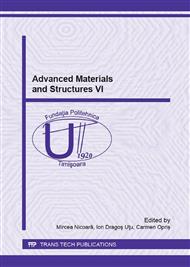p.1
p.8
p.14
p.20
p.27
p.33
p.43
p.49
Study and Optimization of Metal Based Sintered Materials for Automotive Brake Friction Production
Abstract:
The study aims obtaining materials with a high and constant friction coefficient, a high durability and thermal stability that is associated to a lower wear rate, to the absence of noise during braking and to good self-brazing capacity. Cu and Fe-based friction materials have been sintered and the influence of the loading graphite and ceramic filler powders on the friction and wear properties were investigated. Optimization of the composition and of the sintering method were performed targeting to obtain higher tribological properties, compared to the actually produced polymer matrix materials used for the same purpose, in a cost-effective way. The samples, sintered at different temperatures were observed by optical and scanning electron microscopies, while the tribological behavior was investigated by the evaluation of the friction coefficient and wear rate. The worn surfaces of the wear samples were analyzed: principally an abrasive wear was revealed, explained mostly by the presence of ceramic particles. Moreover, due to the high pressure applied combined to an increased temperature, the presence of adhesive wear was detected. The experimentally achieved results show that using a Cu based material with a moderate graphite and ceramic content is a promising material for the considered application. Optimization of the noise reduction during braking is undergoing.
Info:
Periodical:
Pages:
20-26
Citation:
Online since:
August 2016
Authors:
Price:
Сopyright:
© 2016 Trans Tech Publications Ltd. All Rights Reserved
Share:
Citation:


